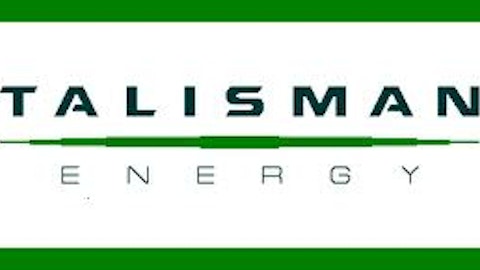General Electric Company (NYSE:GE), Siemens AG (ADR) (NYSE:SI), and ABB Ltd (ADR) (NYSE:ABB) are a trio of industrial giants helping to lead a new round of the industrial revolution. Investors can tag along as they bring technology to the manufacturing process.

Assembly line
There was a time when an assembly line was the height of modern technology. While we’ve come a long way from that point, there is still a large divide between manufacturing and technology that the industrial giants above are working to bridge.
For example, a recent Wall Street Journal article led off with a story about technology at a General Electric Company (NYSE:GE) battery plant that sent emails to a manager at home alerting him of a power outage. From home, the manager was able to review a schematic of the plant and watch the progress of the storm from video cameras at the facility.
From a gee whiz angle, that’s amazing technology. However, taken another step, it helps explain why this is so important. It was a real time account of what was going on at the factory and how the event would impact performance. For example, the article noted that the machines had to reboot, which idled production. With that knowledge, General Electric Company (NYSE:GE) could increase production immediately to make up for the delay.
The next big issue is that the manager was home, not at the facility. While GE’s technology won’t eliminate the need for humans, it does potentially reduce the need for management and high-skilled workers on a factory floor because they are an automated text message or email away.
Helping others
General Electric Company (NYSE:GE) owned that battery plant, but it doesn’t keep its technology to itself. The company is one of the world’s largest industrial firms, helping customers operate more efficiently and to bridge the gap between technological innovation and old-world manufacturing.
The stock has run up over the past year or so as investors have grown more comfortable with its changing business. After the disproportionately large finance arm forced the company to take a government bailout and cut its dividend, investors rightly became skeptical of GE’s widows and orphans status.
Since that time, however, General Electric Company (NYSE:GE) has refocused around its industrial core. It sold NBC and has been slowly trimming its reliance on its finance arm. That said, GE should always have a finance arm to help its customers afford its large and expensive products. So investors need to watch the progress here, but shouldn’t expect an exit from the space.
GE currently yields around 3.3% and has been able to grow both its bottom line and dividend again. The stock still has plenty of turnaround potential.
Less finance risk
Siemens AG (ADR) (NYSE:SI) is very similar to General Electric Company (NYSE:GE) is size and purpose. The company, however, didn’t go through the same harrowing experience as GE. That’s because its finance arm has historically focused on supporting Siemens AG (ADR) (NYSE:SI)’ core. That means helping customers finance Siemens AG (ADR) (NYSE:SI) purchases, not providing things like mortgages.
The company’s shares yield around 2.9% and are off of their recent highs in the $140 range. So, there is some upside potential. There are two headwinds here, however. First, Europe represents more than half of the company revenues. Since that area is still mired in a recession, the company’s top line will remain under pressure over the near term.
The second problem is that Siemens AG (ADR) (NYSE:SI) isn’t as efficient as GE. While the company is working to trim staff and streamline its businesses, its profit margin in 2012 lagged GE’s by about three percentage points.
Although the top and bottom lines have been less than spectacular of late, with both falling last year, long-term investors should like the potential offered by the company’s restructuring efforts.
Three little letters
ABB Ltd (ADR) (NYSE:ABB) is the smallest of this trio. However, its focus on helping customers use power more efficiently is likely to be a key benefit over the long term.
The company’s top line has been headed higher over the last few years, though the bottom line has been more variable. Streamlining efforts, meanwhile, have left profit margins at levels near GE’s and ABB Ltd (ADR) (NYSE:ABB) has been increasing its dividend since initiating it in 2006.
Another interesting aspect of the company’s business is that emerging markets make up about half of the company’s sales. Such markets make up about 35% of the business at General Electric Company (NYSE:GE) and 33% at Siemens AG (ADR) (NYSE:SI). As these high-growth regions move toward the middle class, ABB Ltd (ADR) (NYSE:ABB) looks best positioned to benefit.
ABB Ltd (ADR) (NYSE:ABB) has an around 3.3% dividend yield. Its share price has been range bound since the 2007 to 2009 recession. It may be the smallest of the trio, but has a solid business and good growth prospects fueled by emerging market exposure.
Bringing technology to the factory
All three of the industrial companies above are bridging the gap between technology and manufacturing. That’s going to be a good business for a long time, particularly as companies seek to maintain profit margins in an increasingly competitive world. All three are appropriate for growth and income investors, though General Electric Company (NYSE:GE) probably has the most upside potential because of its troubles during the recession.
The article 3 Companies Leading the Second Industrial Revolution originally appeared on Fool.com and is written by Reuben Brewer.
Reuben Brewer has no position in any stocks mentioned. The Motley Fool owns shares of General Electric Company. Reuben is a member of The Motley Fool Blog Network — entries represent the personal opinion of the blogger and are not formally edited.
Copyright © 1995 – 2013 The Motley Fool, LLC. All rights reserved. The Motley Fool has a disclosure policy.





